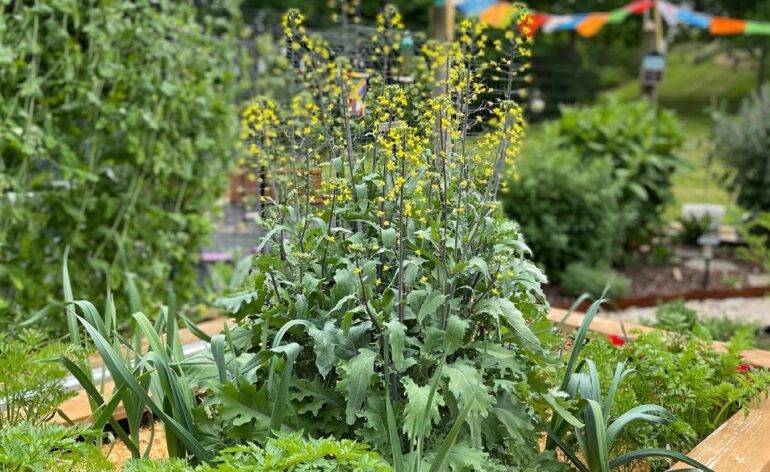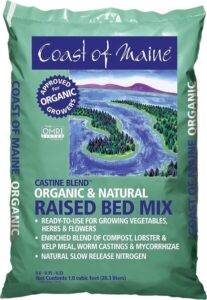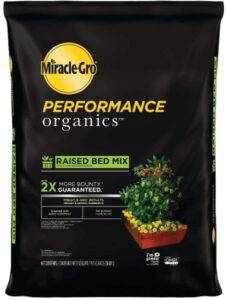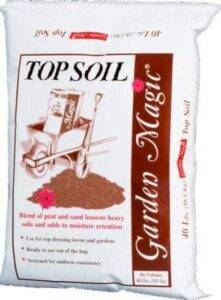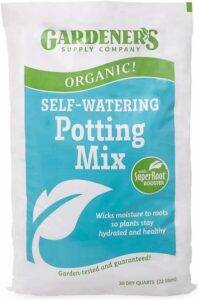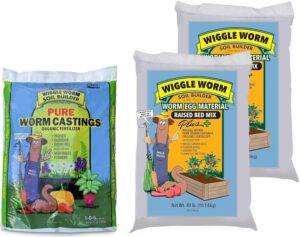6 Best Soils For Raised Garden Beds: Ace That Planting
We independently evaluate all recommended products and services. If you click on links we provide, we may receive compensation.
Raised garden beds are an easy and inexpensive way to greatly expand the amount of growing space you have. But, if you want to make the most out of your raised garden beds, you’re going to need to fill them up with high quality soil that can support the growth of whatever you’re planting.
That’s why I’ve put together this list of the best soils for raised garden beds that you can buy online.
It wasn’t the easiest list to put together for the same reason that it’s not easy to find soil that’s tailored for raised garden beds. Namely, raised flower beds require a soil that’s halfway between an indoor potting soil and conventional ground topsoil, allowing drainage like indoor potting soil but some of the density and strength of topsoil.
Read on to see all the products that perfectly thread that needle.
Key Takeaways
After examining the many soils for raised garden beds I’ve tried out over the years and doing lots of research online, I’m really happy with the list of soils for raised garden beds that I settled on. Overall, the Coast of Maine Castine Blend Organic and Natural Outdoor Raised Bed Mix is the tops among the best soils for raised garden beds.
It’s an all-natural and organic product that contains tons of slow-release nitrogen, which will support the growth of your plants for months. It’s a great soil that almost any gardener can benefit from using as the basis of their soil blend.
I’ve also recommended a few other products with more specific use cases, such as the Organic Plant Magic Store Compressed Organic Potting Soil, which offers a lot of soil in a package that won’t take up much storage space. I’ve also recommended a combo pack of Wiggle Worm Earthworm Egg Material Raised Bed Mix and Wiggle Worm Plus Worm Egg Material Soil, which is a great solution for gardeners who want to encourage lots of worm growth.
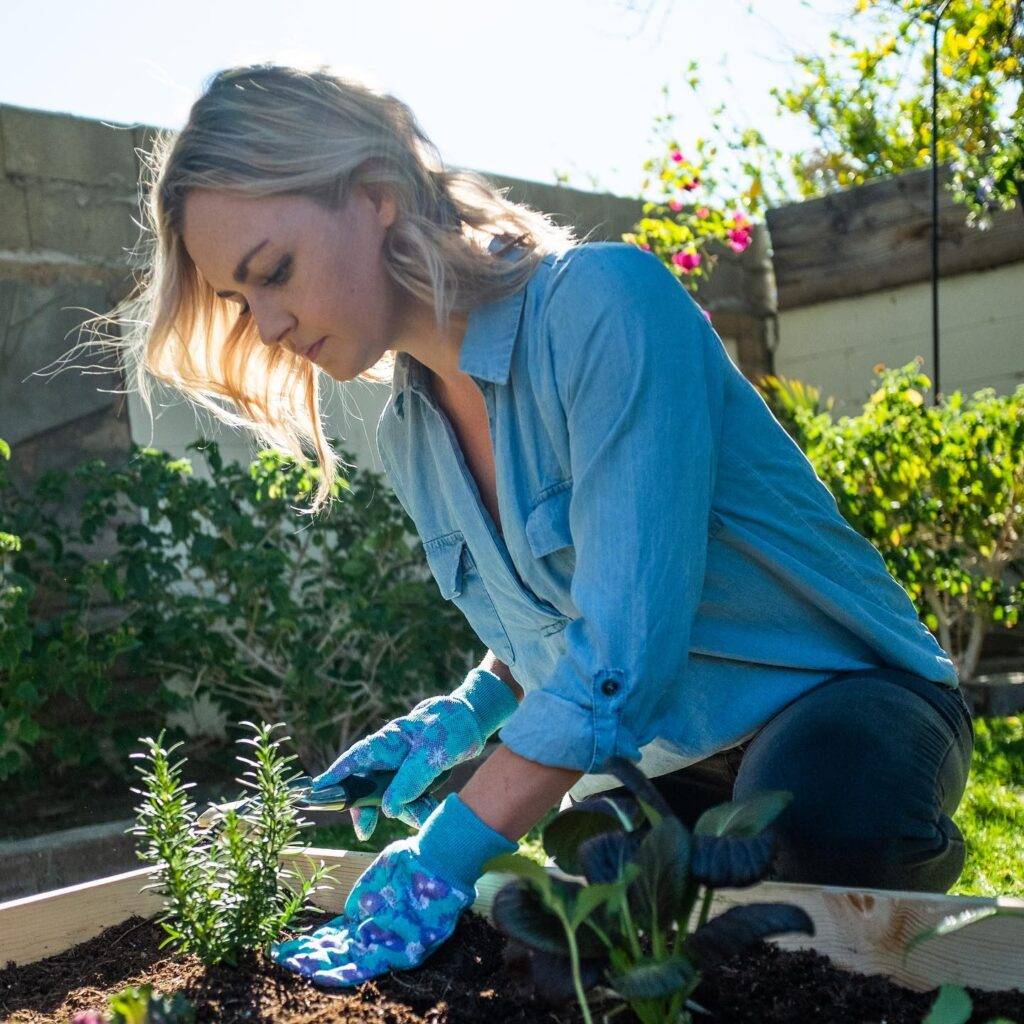
miraclegro / Instagram
Best Overall: Coast of Maine Castine Blend Organic and Natural Outdoor Raised Bed Mix
Why This is a Quality Choice: This Castine Blend from the Coast of Maine brand is an exceptional raised bed soil. Its texture is perfect for growing vegetables and flowers, and it contains a slow-release nitrogen that can help feed your plants for weeks.
It also contains biochar, which the manufacturer claims can help your soil retain nutrients after periods of heavy rain.
Who is this for? This soil is an excellent choice for many gardening projects, especially vegetable gardens and flower beds.
Flaws but not deal-breakers: This soil doesn’t contain any earthworm casting or eggs; it would be a good idea to add some yourself.
Component ratio: 60% organic, 40% mineral | Texture: Loamy | Ingredients: Fully cured compost, sphagnum peat moss, dehydrated poultry manure, lobster and crab shell meal, greensand, biochar, worm castings and mycorrhizae | Package size: 23.8 lbs
Best Budget: Miracle-Gro Performance Organics Raised Bed Mix
Why This is a Quality Choice: This Miracle-Gro Performance Organics Raised Bed Mix is another top choice on this list of the best soils for raised garden beds on account of its excellent organic ingredients and ease of use. You don’t need to add anything to this gardening mix when you’re filling your raised garden beds because it contains soil, compost, and fertilizer.
Who is this for? This is excellent soil for anyone who wants to fill out a couple of raised garden beds but doesn’t want to buy several different products to do so. You can also order the product in a few different sizes, meaning you don’t have to underbuy or overbuy soil.
Flaws but not deal-breakers: A few customers have complained about the presence of gnats in the soil, but this seems to be a pretty rare occurrence.
Component ratio: 58% organic, 42% mineral | Texture: Loamy | Ingredients: Compost, processed forest products, rice hulls, sphagnum peat moss, coir, fertilizer, and yucca | Package size: 46.9 lbs
Best Value: Michigan Peat Garden Magic Potting Soil with Perlite
Why This is a Quality Choice: This bundle of six bags of Michigan Peat Garden Magic Potting Soil with Perlite offers incredible value for gardeners who are going to need lots of soil for raised garden beds this year. And, with high-quality organic ingredients, you can be sure that you’re not sacrificing quality while going after value.
Who is this for? As you’d expect for a bundle that contains six 40-pound bags of soil, I’d recommend this product to only someone who can use all of it in the course of a growing season.
Flaws but not deal-breakers: This soil is a little bit finer and more sandy than others on the list, so it’s appropriate for growing only some types of plants.
Component ratio: 65% organic, 35% mineral | Texture: Sandy | Ingredients: Reed sedge peat, perlite, and sand | Package size: 40 lbs (x6)
Best Mycorrhizae-Enriched Soil: Gardener’s Supply Company Organic Self-Watering Potting Mix
Why This is a Quality Choice: This Organic Self-Watering Potting Mix from Gardener’s Supply Company is an excellent soil for starting off a garden. The manufacturer calls it “self-watering” because it contains a high amount of mycorrhizae, which helps roots absorb water and grow (but I wouldn’t quite take the name literally). Nonetheless, you’ll be able to quickly start seeds and establish seedlings in this soil.
Who is this for? Gardeners who are planning to raise lots of plants from seeds should consider this product because of the beneficial effects that Mycorrhizae has on the roots of young plants.
Flaws but not deal-breakers: This isn’t the largest bag of soil on this list, but it can work if you’re planning on raising young plants in one raised garden bed before moving them to another growing environment.
Component ratio: 60% organic, 40% mineral | Texture: Loamy | Ingredients: Canadian sphagnum peat moss, peat humus, perlite, limestone, gypsum, and mycorrhizae | Package size: 40 quarts
Best Worm Casting Soil: Wiggle Worm Earthworm Egg Material Raised Bed Mix for Gardening/Planting and Wiggle Worm Plus Worm Egg Material Soil – Combo Package
Why This is a Quality Choice: This option among the best soils for raised garden beds is actually two products that are bundled together. The bundle includes three bags of soil that was specifically designed for raised garden beds, as well as one bag of fertilizer and worm egg material. As you can tell from the names of these products, you can expect to generate a lot of living worms in your soil using this combination.
Who is this for? Worms can vastly improve the growing conditions for both vegetables and flowers by breaking down organic materials into nutrients and aerating the soil. If you’re planning on growing in soil that doesn’t have its own resident worm population, you should consider using this suite of products.
Flaws but not deal-breakers: As a bundle, this might end up being too much soil for some consumers.
Component ratio: 60% organic, 40% mineral | Texture: Loamy | Ingredients: Various in the different products | Package size: 40 lbs (x4)
Best Compressed Soil: Organic Plant Magic Store Compressed Organic Potting Soil
Why This is a Quality Choice: You can use this compressed soil from the Organic Plant Magic Store to store lots of soil without taking up too much space. Once you add water to this soil mix, it will increase in volume by four times.
Who is this for? I would recommend this raised garden bed soil to gardeners who like to have soil for raised garden beds on hand but don’t have a lot of storage space.
Flaws but not deal-breakers: Some gardeners may feel that this product contains too much coconut coir for outdoor use, but it is appropriate for some use cases.
Component ratio: 58% organic, 42% mineral | Texture: Sandy | Ingredients: coconut coir, worm castings, compost, humic acids, amino acids, kelp and beneficial GroBiotics including mycorrhizae | Package size: 2 lbs
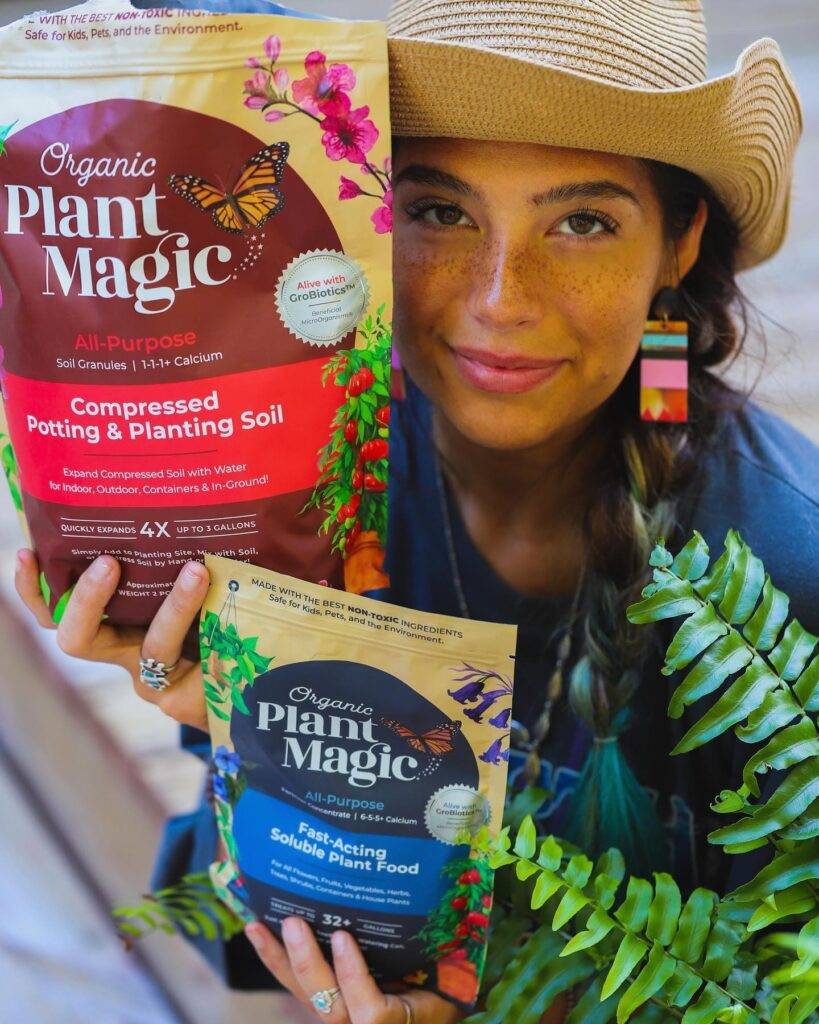
thebarefootedkitchen / Instagram
Buying Considerations for The Best Soils For Raised Garden Beds
Ingredients
High-quality ingredients are an essential part of a great mix for raised garden beds. You want to look out for naturally sourced ingredients such as sphagnum peat moss, coconut coir, and peat hummus as the main ingredients of your potting soils. These ingredients will ensure that whatever you’re planting has a nice and productive environment in which to grow.
Texture
Next, you want to ensure that the soil you’re buying is the right texture for what you’re growing. Most vegetables prefer to grow in a loamy soil, which is what most raised garden bed soils are rated as. However, if you’re working on an outdoor succulent patch, you’ll definitely want to look for a sandier option. Other ideas that are similarly creative might push you towards getting soil that’s different from the standard loamy options for vegetables.
Additives and N–P–K
Finally, it’s important to look at what extra ingredients the soils you’re considering buying have. Some gardeners like to buy soils that have as much as possible included in them already. If that’s the case for you, then look for a soil that has lots of extra ingredients like worm castings, compost, and fertilizers.
Other gardeners prefer to get soils that are as basic as possible, then add their own compost and fertilizers. That helps them maintain as much control as possible over the properties of the soil they’re using.
How I Choose These Products
When I was working on this list, I tried really hard to add only the products that have the highest quality and value for money that’s possible to find. I relied on my years of experience working in raised garden beds to do this, as well as the reviews of different soils for gardening beds that I researched online.
In addition, it was important to me that all the brands on this list have an unquestionable reputation for quality. Brand reputation is crucial because, as many gardeners know, the soil that’s shipped by some brands can be incredibly inconsistent—great after one order, less so the next.
Finally, I chose options that have a wide range of use cases instead of just filling the list with different versions of fundamentally similar all-purpose soils. I hope that you’ve found a soil you’re excited to fill your raised garden beds with this spring.
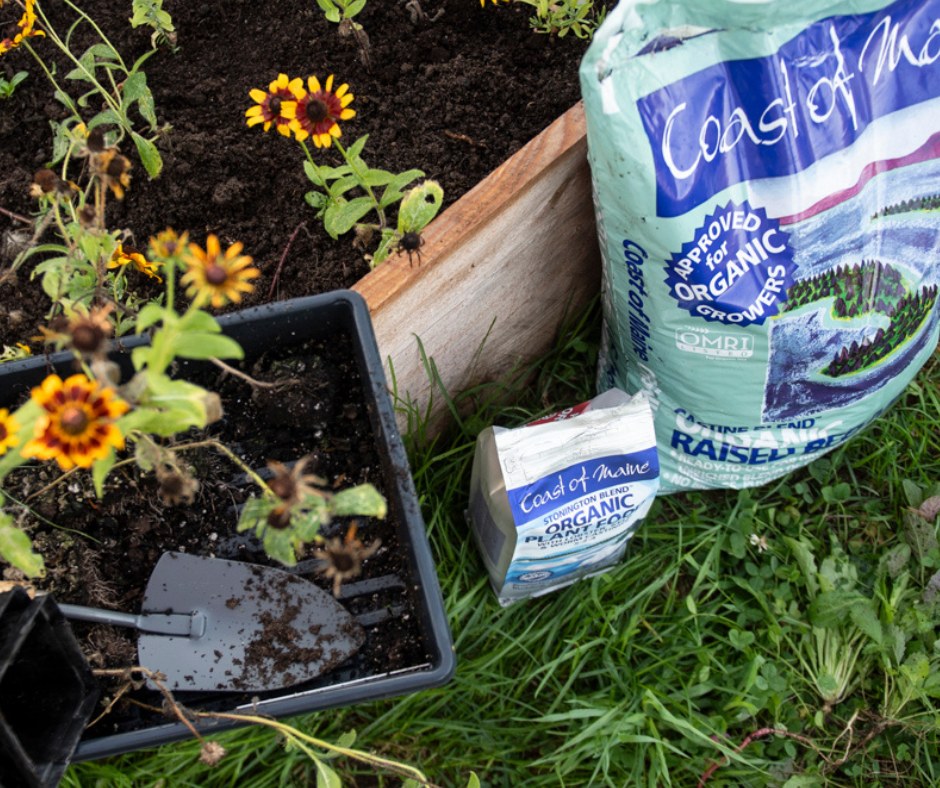
coastofmaineorganic / Instagram
Final Verdict
At the end of the day, I rated the Coast of Maine Castine Blend Organic and Natural Outdoor Raised Bed Mix as the best of the best soils for raised garden beds. It was an easy choice to make as a result of the brand’s excellent reputation and the dedicated formula of this soil mix that’s perfectly adapted for use in raised garden beds. You won’t go wrong if you choose this great soil for your gardening projects this year!
FAQs
Do raised beds need compost or top soil?
Raised beds need a mix of compost and topsoil (or a dedicated raised garden bed soil like the entries on this list) in order to provide the ideal growing environment for flowers, vegetables, or herbs. In general, most gardeners will say that you want a ratio of about 70 percent topsoil to 30 percent compost.
However, the exact mix you should go for depends on exactly what you’re planning on growing. Many gardeners also advocate adding fertilizer or plant food to raised garden beds in addition to compost and topsoil.
Can you fill a raised bed with just compost?
No, you can’t fill a raised garden bed with just compost, as your plants won’t have a good environment in which to grow if you do so—just like a pot or a grow bag. Instead, you should fill a raised garden bed with a mix of top soil or a dedicated raised garden bed soil (like those featured on this list) in a 70% percent soil to 30% compost ratio.
Soil testing is a great idea if you’re really picky about your soil and compost mix using a home soil test kit or by sending a sample to a local lab.
What is the difference between potting soil and raised garden soil?
The main difference between potting soil and raised garden soil is that the latter has a bit more density to it. This helps it retain moisture better than potting soils are designed to do while still providing enough aeration to the roots of your plants.
However, a conventional topsoil risks being too dense to allow for that aeration, placing the best soils for raised garden beds somewhere between potting soil and topsoil.

